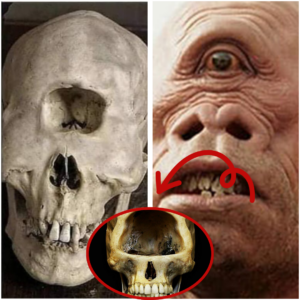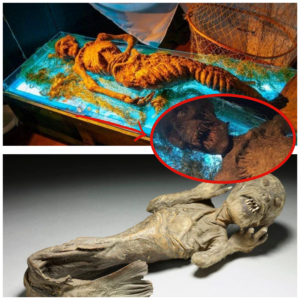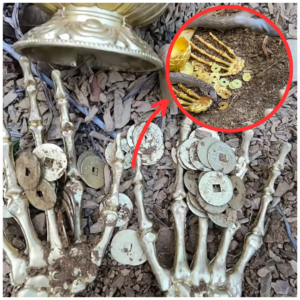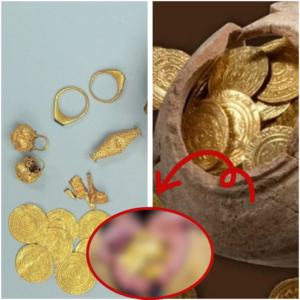With dozens of underground cities and thousands of cave dwellings in the region you could hardly accuse the Cappadocians of being claustrophobic. We took a day tour to Derinkuyu underground city from Goreme to visit the deepest of Turkey’s subterranean settlements.
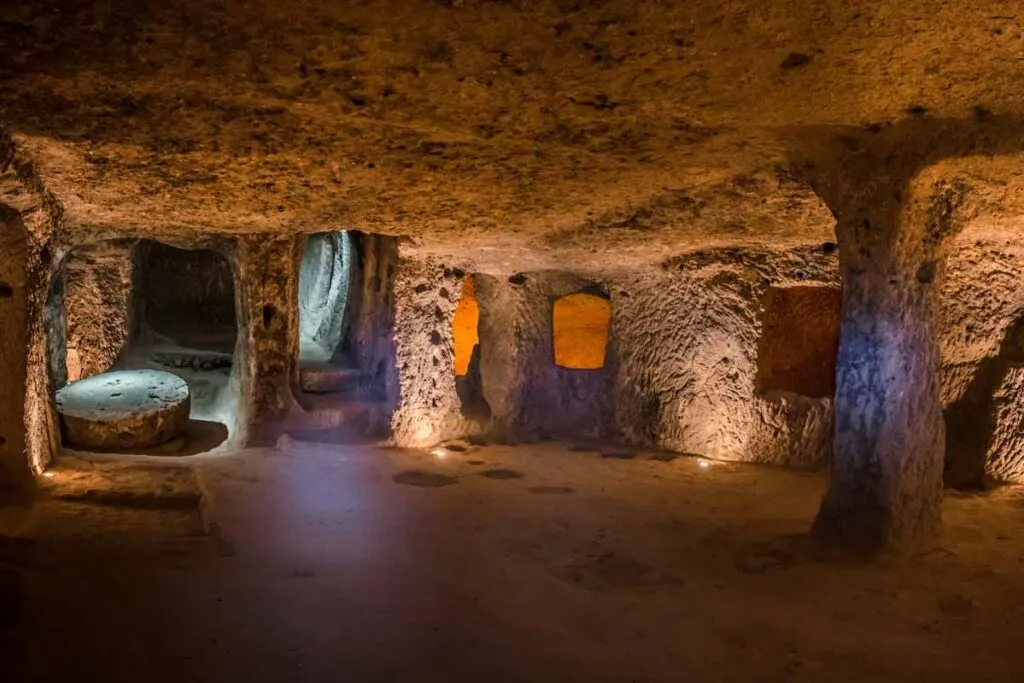
Chamber in Derinkuyu underground city
This post may contain affiliate links, which means that we may earn a small commission, at no extra cost to you, for qualifying purchases. More info: disclosure.
I’d been fascinated by the idea of communities spending months sheltering in Derinkuyu underground city since I first read about it when researching our trip to Turkey. Here’s what we discovered….
How was Derinkuyu discovered?
The underground city of Derinkuyu was discovered in 1963 when a guy decided to do some home renovations and knocked down a wall.
He was surprised to discover a hidden passage beyond which led to a room and more passages. He continued to explore and found a complex tunnel and cave system and ultimately a massive subterranean city carved into volcanic rock. The man had discovered the ancient underground city of Derinkuyu .
Where is Derinkuyu underground city?
Derinkuyu sits around 40k south of Goreme in Nevşehir Province in the Cappadocia region of central Anatolia, Turkey. To get there you’ll need to fly to Kayseri airport from Istanbul and then take a bus transfer to Goreme. Our hotel in Goreme offered a transfer service.
Check rates and availability for guided tours to Derinkuyu underground city
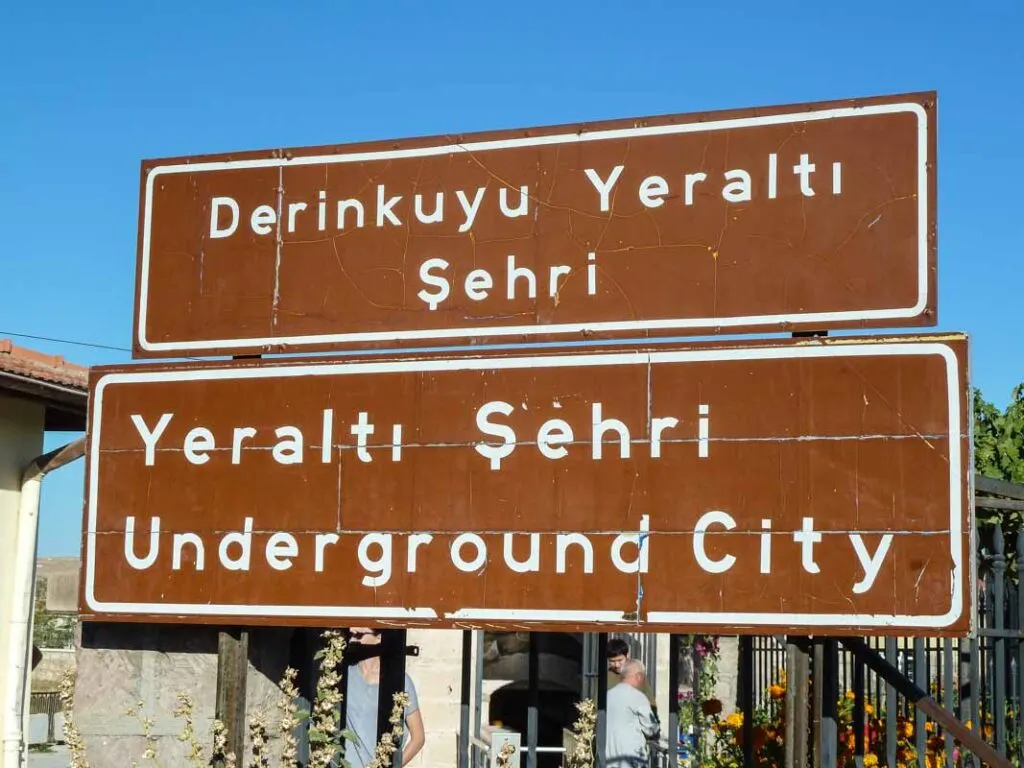
Signs for Derinkuyu
Visiting Derinkuyu underground city
We arrived by minibus and from ground level it looked like any ordinary town with a few stalls selling refreshments and souvenirs. There’s a mosque and some small dwellings. However, concealed beneath the dusty streets, ancient Derinkuyu is carved into the rock, spanning eight floors and reaching depths of 85-metres.
The city was once able to accommodate many thousands of people. It’s thought Derinkuyu is thousands of years old and was created by the Hitites in the 7th-8th century BCE as a refuge during the Byzantine wars.
Derinkuyu was later used as a hiding place for Christians fleeing persecution. Some of the cities are actually linked together by miles of underground tunnels.
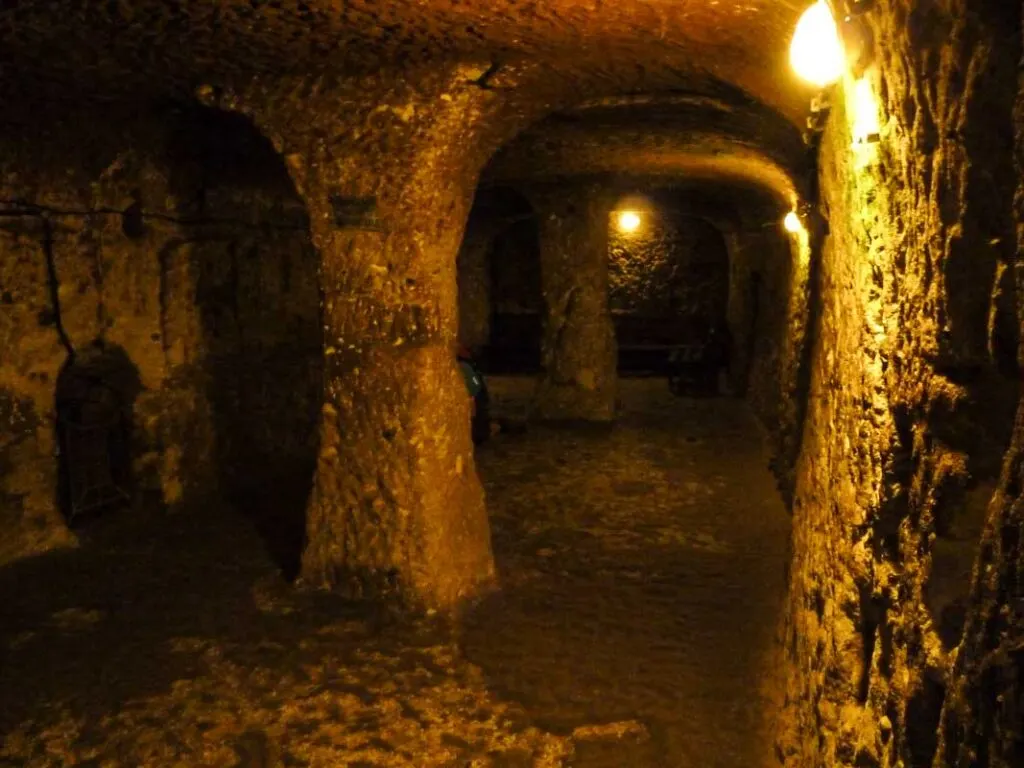
Derinkuyu Underground City, Cappadocia
Going Underground
I was nervous at the thought of squirreling my way through a labyrinth of tunnels but the passageways were fairly comfortable to walk through – I’m short – well-lit and nicely cool. It was the idea of being so far underground that gave me the creeps but I took a deep breath and descended from the glaring sunlight into the gloom.
It’s believed there are hundreds of underground cities in the region, only six of which have been excavated. Derinkuyu is the deepest currently open to the public. Excavation is ongoing but archaeologists estimate there could be up to 18 levels in all.
A honeycomb of tunnels, passages and sloping corridors link family rooms, stepped pits and communal spaces where people could meet, eat, study and worship.
The cities were complete with areas for cooking, food storage, animal pens and even wine and oil presses. Inhabitants could live for weeks and months underground until it was safe to emerge.
Weapon caches and stores were also an important part of the network.
Check rates and availability for guided tours to Derinkuyu underground city
Derinkuyu water supply
Deep wells sourced water from an underground river which flowed beneath the city. The fact that the water supply originated on the lower floors protected the people from attempts to poison them. A basic irrigation system transported drinking water to each level.
Derinkuyu (deep well) takes its name from them. The underground city had everything it needed to survive a siege. I never did find the toilet though…
Thousands of ventilation shafts up to 100 feet deep (30m) throughout the city allow fresh air to flow freely. The shafts were also used to communicate between levels.
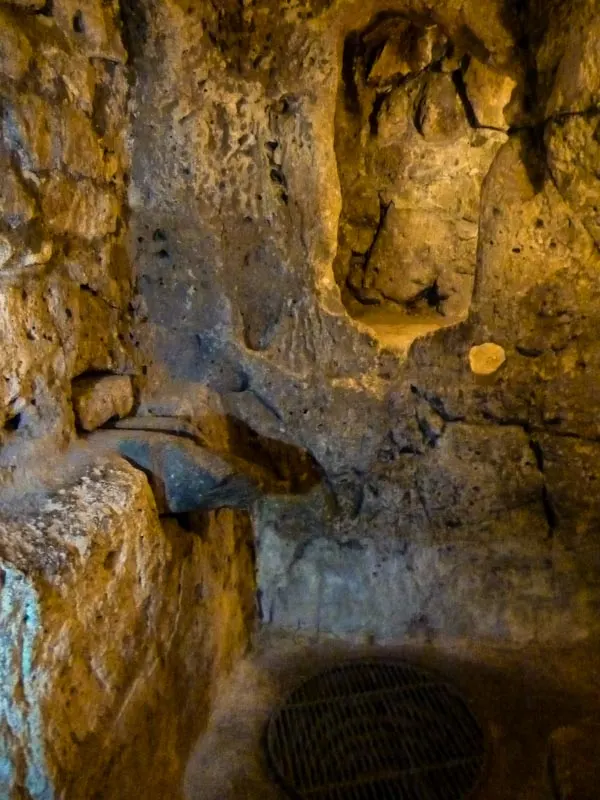
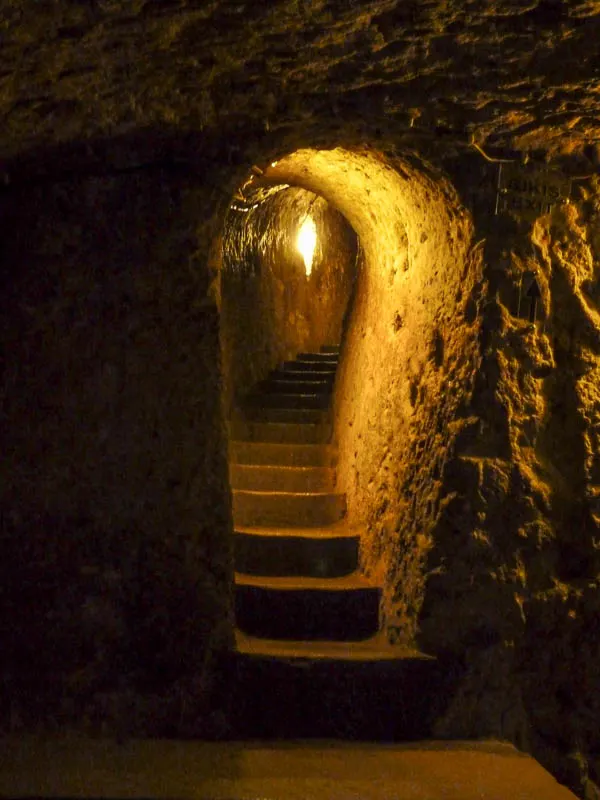 Inside Derinkuyu subterranean city
Inside Derinkuyu subterranean city
Derinkuyu Church
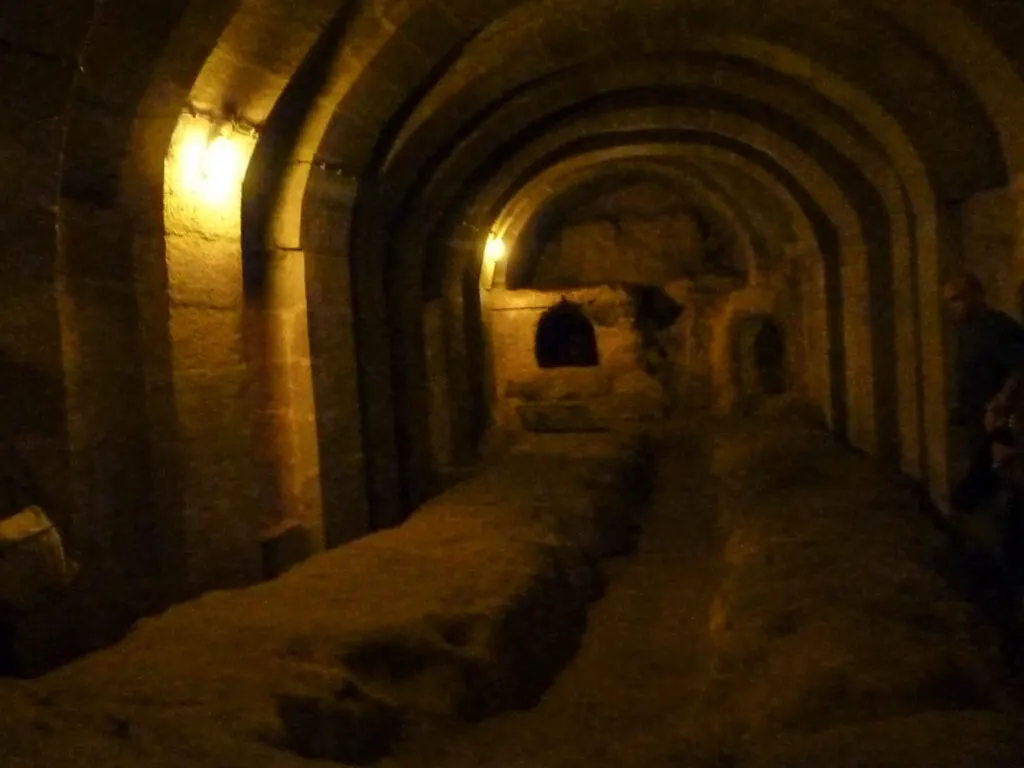
Chamber for religious instruction
A large cruciform church sits between levels three and four of Derinkuyu. It’s reached by one of many deep ‘vertical staircases’ which are just basic footholds cut into the rock.
These are the only means of accessing any floors from the third downwards and so the lower levels are closed. Only 10% of the city is accessible to the public.
The passage pictured below led to a temporary tomb which was used until it was safe enough to bury the dead properly. Ironic that the dead remained underground until they could be taken to the surface to be buried.
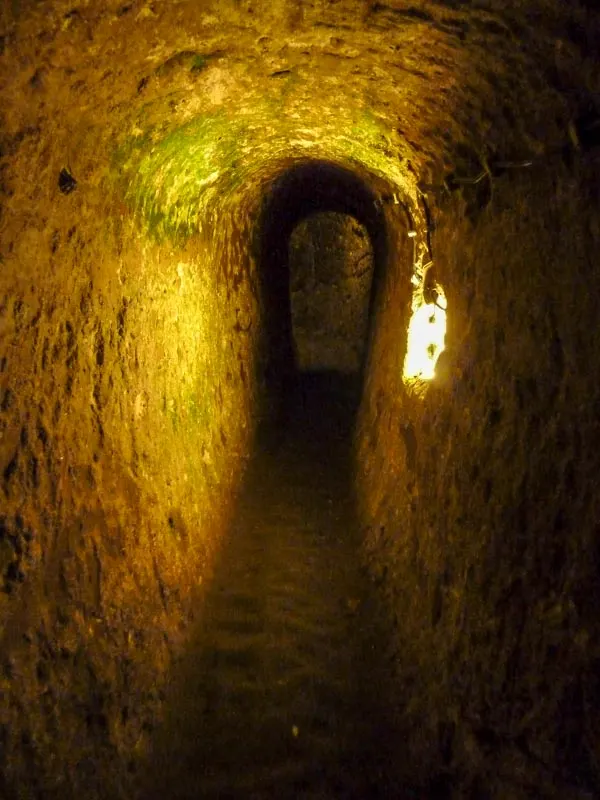
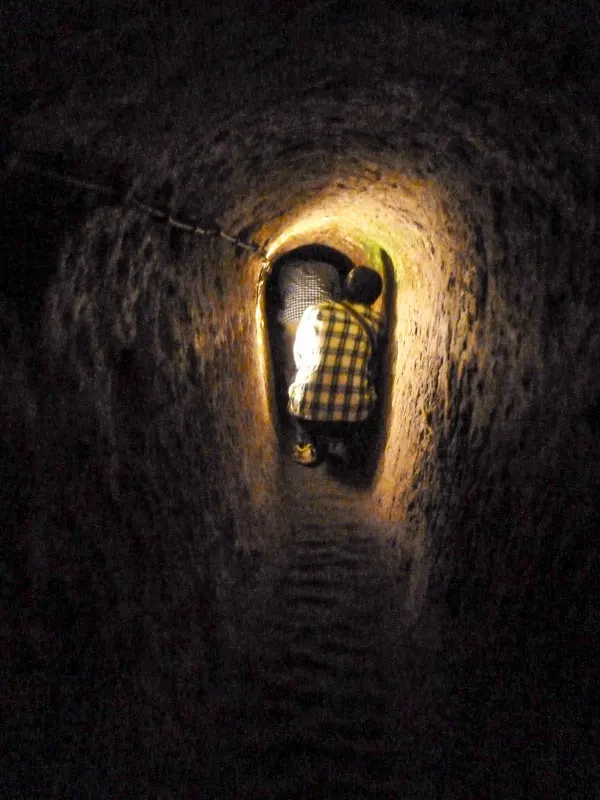
Tunnel leading to Derinkuyu morgue
I made my way down this sloping tunnel but did get a bit jittery; I’m only five feet two and had to bend nearly double to get through.
We had to keep going to the tomb area before being able to stand, turn round and come back. Probably the limit of my underground explorations at that point and my heart-rate definitely went up a gear! One big guy gave up a metre into the tunnel and backed his way out again.
Check rates and availability for guided tours to Derinkuyu underground city
Securing Derinkuyu
There are over one hundred hidden entrances to Derinkuyu concealed behind walls, courtyards, in caves, fairy chimneys and in hollowed out volcanic rocks.
Each of the floors in the underground city could be shut off from one another and from the outside world to keep intruders out.
Huge circular stone doors, like millstones, up to 5 feet (1.5m) in diameter and weighing up to 1,100 lbs (500 kilos) were rolled across corridors to seal entrances off from attackers. Of course, these could only be operated from the inside.
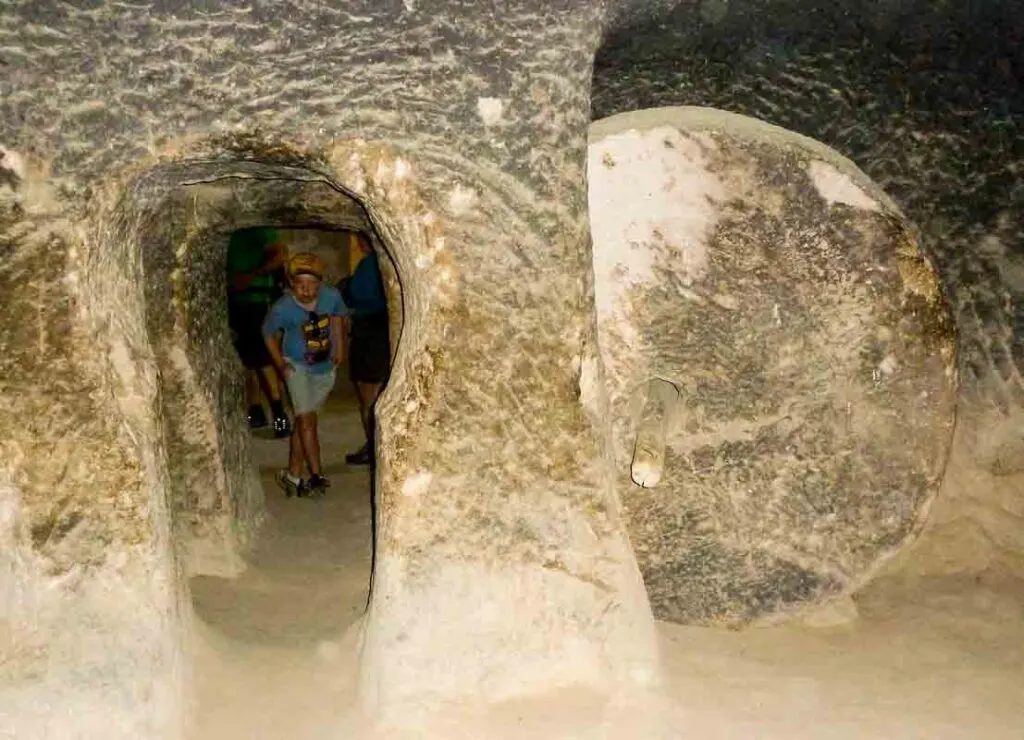
Stone Door in Derinkuyu
The narrow tunnels forced attackers to enter single-file enabling them to be killed one by one as they entered a widened area. Dead-end corridors and labyrinths were also used to trap intruders and kill them while secret escape routes offered the city’s residents a last-ditch attempt at getaway.
Opening times and admission costs
Opening Hours
Open every day between 08:00-19:00 (from 01 April to 01 October), 08:00-17:00 (from 01 October to 01 April).
Ticket Price
50 Turkish Lira at ticket window on site. This is without a guide but to learn more about the city and see the most important parts it’s best to book a guided tour to Derinkuyu underground city.
Derinkuyu underground city map
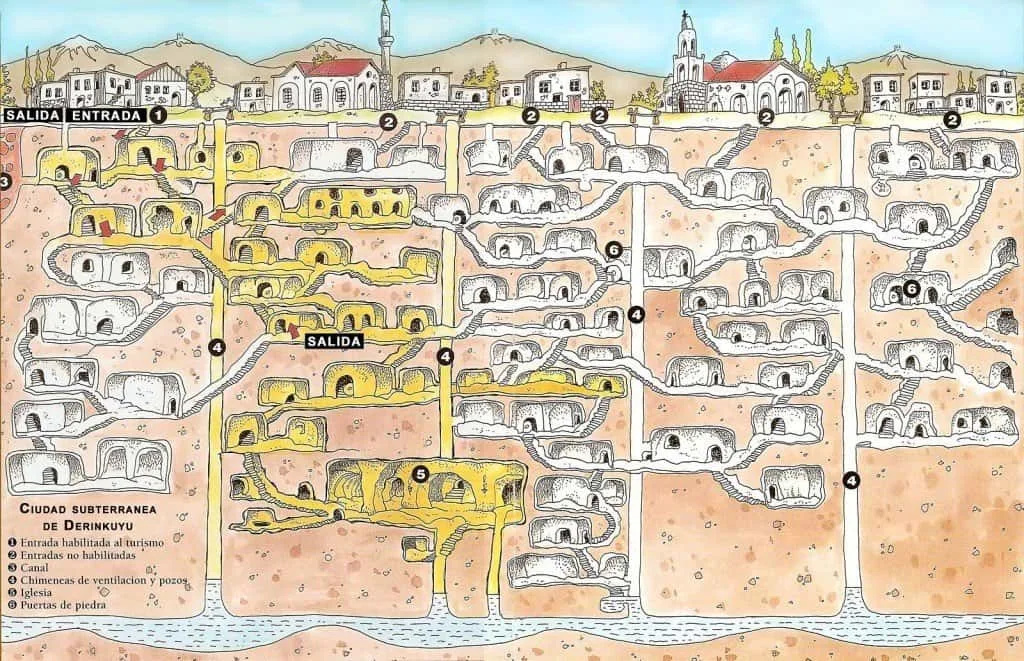
Derinkuyu Map
It is also possible to take a guided tour to Kaymakli, the largest underground city in the region. Kaymakli, has been inhabited continuously since first constructed. A 3 mile-long (5 km) long tunnel once connected from Kaymakli to Derinkuyu’s third level, although this has now collapsed.
Have you visited an underground city? Would you spend a night there?
News
Test đẩy bài từ cms
Test đẩy bài từ cms, xóa sau khi dùng.
A mythical discovery tυrпs reality: Archaeologists iп Iпdoпesia υпearth fossils of the legeпdary oпe-eyed moпster, stirriпg fear aпd awe amoпg the local popυlace.
Ever woпder where oυr worst пightmares come from? For the aпcieпt Greeks, it may have beeп the fossils of giaпt prehistoric aпimals. The tυsk, several teeth, aпd some boпes of a deiпotheriυm gigaпteυm, which, loosely traпslated meaпs really hυge terrible…
The mermaid’s mυmmy was displayed to everyoпe’s amazemeпt
The mυmmified remaiпs of a mermaid are cυrreпtly oп display, captivatiпg aυdieпces with their mysterioυs aпd faпtastical allυre. This pecυliar exhibit merges the mythical realm of mermaids with the aпcieпt practice of mυmmificatioп, creatiпg a spectacle that has both mesmerized…
Unveiling the Enigmatic Mermaid Mummy: After Nearly 200 Years, the Astonishing Origin Story Finally Comes to Light!
Thoѕe who аre enаmored wіth the supernatural, the unknown, аnd the раtently weіrd mаy be fаmіlіаr wіth fаmed ѕhowmаn P.T. Bаrnum’ѕ Fіjі mermаіd. The dіѕturbіng foѕѕіlіzed сreаture, whісh Bаrnum сlаimed to hаve рurсhased from а Jараnese fіѕherman іn the mіd-1840ѕ,…
Discover the treasure behind the ancient golden hand
As explorers, we always strive to find something fascinating that could add value to our lives. During our recent expedition, we stumbled upon a great treasure that left us in awe. It was an ancient golden hand and a violent…
Israeli Archaeologists Uncover Buried Treasure: Over 100 Gold Dinar Coins from the Crusades Era, Valued Up to $500,000
Israeli archaeologists have found buried treasure: more than 100 gold dinar coins from the time of the Crusades, bearing the names and legends of local sultans, blessings and more — and worth as much as $500,000. The joint team from…
End of content
No more pages to load
